

Author: Kent Moors, Ph.D.
This edition of the Classified Intelligence Brief Spy Tale series picks up where the last entry ended (“Overseeing ‘Sounder’ in Moscow, Part I,” Classified Intelligence Brief, September 1, 2021).
As I discussed last time, I moved to Moscow following a period of time in which a longer-term operation had been devised. That op obliged that I occupy an overt position at an institute of the Soviet Academy of Sciences while facilitating an asset in place at the same institute.
The former position was held under a formal invitation from the Soviets. The latter was undertaken as a NOC, one having no official cover from the US Embassy. That meant, if detained, I was essentially on my own.
This is the rather detailed background on the op I provided in last week’s Spy Tale. It gives a taste of what the environment was like at the time.
The center of attention was a fellow I will call Giorgi Kakabadze (not his real name). He was 54 when I first met him, from Soviet Georgia and the Institute of Philosophy at the Soviet Academy of Sciences in Moscow. He would die just short of a 61st birthday.
First, some broad strokes. The op took seven years to play out. It was the longest running assignment of my intel career and the primary (and really only) intel responsibility during the years I spent in Moscow. Georgi had contacted the US embassy in London and offered to serve as an “agent in place.” I was given the assignment with our joint overt academic careers as the cover.
The initial contact came at a London scholarly conference in August 1983 and ended with a December 1990 death in a dacha outside Moscow.
Giorgi had served for over a decade in Paris on the Soviet delegation at the United Nations Educational, Scientific, Cultural Organization (UNESCO). On April 23, 1983, the French government expelled 47 Soviets, accusing them of espionage. Giorgi was not on the list but Moscow decided unilaterally to withdraw additional personnel beyond the 47. One morning, Giorgi just showed up at the Academy’s Institute of Philosophy and resumed an academic career he apparently had left years earlier.
Yuri Andropov had become the USSR General Secretary in November of 1982. Before that he had been chairman of the KGB from May 1967 until May 1982. Late in his KGB position, Andropov had created a new division of the spy agency to recycle those who had been “blown” in foreign assignments. They were inserted back onto their older careers, still espionage officers but now operating under a new professional cover.
From those new positions, these folks would be reinjected back into the world as journalists, administrators, scientists, or, as the case with Giorgi, academics/scholars. The idea was for them to take back up assignments recruiting agents abroad but now using a different career base.
We had concluded Giorgi had been well up the ladder. Intel provided strong reason to believe he was a KGB two star (i.e., major) general and had been instrumental in running a network of foreign illegals (officers and agents under deep cover with no overt connection to Soviet embassies).
In addition to UNESCO, he had served at the Soviet embassies in London and Washington and had excellent English and French. He quickly became a target of highest interest. But he did not want to be run by one of the Agency officers from our embassy in Moscow. Since he was regularly out of the country building back up an international scholarly visibility (a situation I personally knew well), he preferred to be debriefed outside the USSR.
That did not work very well, given his irregular travel schedule. However, it did allow the two of us to develop a relationship. I would send him books he could not find back home along with a gift now and then for his only granddaughter. Occasionally, we would meet over the next year at conferences in Europe, several of which were back in London.
At some point in the process, after we had become well known to each other, I revealed my “other role” as an intel officer. Giorgi just smiled, leading me to conclude that he already knew.
But events toward the end of 1983 made matters far more serious, changing the dynamics significantly. We knew that Andropov’s health was failing, but we did not know at the time how bad it was. We later learned that he had moved into a hospital, was one of the few Soviets on dialysis full time as his kidneys failed. He died on February 9, 1984. In all he would run the country for only 15 months.
In retrospect, Andropov’s main accomplishment was to bring in a group of younger future leaders, including his confidant Mikhail Gorbachev who, after a short respite in which the last geriatric (Konstantin Chernenko) led the government, would become the last Soviet head of state (the final General Secretary and the first and only Soviet President).
Meanwhile, the Soviet-US relationship continued to sour. Andropov had a conviction that the US was planning to undermine and even attack the Soviet Union. The first was certainly true but the second was not.
Nonetheless, following a blunt assessment a few years earlier by Soviet leadership that the US and NATO were developing a nuclear preemptive attack, Andropov had the KGB and GRU (Soviet military intelligence) develop counter measures. Called Operation RYaN (from the Russian for “Nuclear Missile Attack”— Ракетное Ядерное Нападение), it was to act as an early tripwire response. Andropov personally believed the West was planning such an attack.
That belief and the existence of RYaN as an official policy led to a succession of miscalculations beginning in the late Summer of 1983 that significantly ramped up the crisis environment. Three events in rapid succession, brought us closer to war than at any time since the Cuban Missile Crisis in 1962.
First, on September 1, Korean airline flight KAL 007 (how appropriately numbered) was shot down over Soviet airspace killing all 269 onboard. It had strayed some 350 miles inside the USSR in what the Soviets had labeled an espionage mission.
Then, on the night of September 26, 1983, the Soviet orbital missile early warning system (Oko) signaled the launch of an intercontinental ballistic missile (ICBM) from US territory. This was followed in short order by Oko reporting four more ICBM launches against the USSR.
A lieutenant colonel in the Soviet Air Defense Force named Stanislav Petrov was on duty that night overseeing the telemetry from Oko. Petrov correctly concluded that the signals were computer glitches from a newly installed system and refused to pass on the warning. His view was subsequently confirmed by the lack of any corroborating data from ground based early warning radar systems.
Petrov got in trouble for not following procedures. But doing so might well have triggered a real life Fail Safe or Dr. Strangelove. Petrov probably prevented a World War III.
However, the tension was rising on both sides and set the stage for a spark that came close to starting a serious hot war. On November 7, the 1983 version of Able Archer began.
This was a major NATO war game conducted each year in which, among other things, nuclear weapons protocols for striking both Warsaw Pact members and the USSR were rehearsed. The assumption of the exercise was a conventional force overrun of Western Europe by Warsaw Pact forces and the operationalizing of the promised NATO nuclear response. The Soviets never liked this but previous leadership in Moscow had learned to live with it.
Not this time. Andropov believed the 1983 Able Archer version was a deception to cover an actual attack. A massive mobilization of troops quickly resulted, with Soviet nuclear missile and bomber detachments elevated to their highest state of readiness (equivalent to the US DEFCON 1).
The situation was eventually defused but assets in several Warsaw Pact nations in short order indicated how paranoid the situation had become and a decision was made to upgrade with all possible speed the network of assets in place to serve as our own early warning system.
Giorgi was given the codename Sounder. His status was upgraded and the decision made to set up a local intermediary for his activities. The individual could not be anybody from US embassy personnel since everybody there had KGB surveillance. Given the overarching “Moscow Rules” that animated intel activity in the city, any unexplained personal contact would be held suspect.
Somebody had to be put in close proximity to Sounder who had an ongoing reason to meet with him. And so, began the process of issuing me an official invitation to the Academy Institute as a foreign lecturer.
Now I have previously provided the outlines of my appointment to the Institute of Philosophy at the Soviet Academy of Sciences in Moscow (see “Setting the Stage in Moscow, Classified Intelligence Brief, May 12, 2021). As an administrator at the institute, Sounder could recommend foreign lecturers for the faculty. In addition, the two of us had developed documented joint activities at various conferences in Europe, along with a correspondence history (certainly read by his intelligence colleagues).
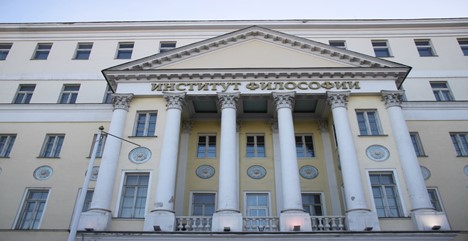

One of the operational elements was my language facility. I had some Russian, but it was hardly sufficient to conduct academic work. And it was also considered necessary that the Soviets believe my language ability was less than it was. One learns a great deal by overhearing conversations at meetings, over lunch, in hallways, and among staff if they do not believe you understand much of what is being said.
I had to play the role of an “intelligent but dumb” foreigner. So, my lectures were in English, translated for those students who did not understand. That turned out to be fewer than I thought. Occasional Q&A would include Russian, but I had to be careful to exhibit only basic understanding.
The Institute, like all other components of the Academy of Sciences, remains today the most elite advanced education in the country. On average, students are older than graduate students in the US, usually had professional experience of some sort prior to entry, had been personally recommended by people of importance, and already had one or more foreign languages.
The target for all enrolled was to receive the prized Ph.D. and became a corresponding member of the Academy, allowing thereby access to facilities nationwide, assured publication of whatever one wrote, and, more importantly, a guaranteed salary. Following the European practice, the doctorate was a research degree. That meant the lectures I provided were not to fulfill course or credit requirements but contributed to an ongoing scholarly “hothouse.” Everybody was in the process of writing something.
From that standpoint, my time at the Institute would be one of the most interesting (and challenging) experiences of an almost fifty-year academic career. It was the “other” aspect of my time there that would keep me up at night.
I finally became used to the feeling of always being watched. It helped that much of this would be by a primary watcher I have elsewhere called “Sergei” (“Cornering ‘Sergei’ in Arbat,” Classified Intelligence Brief, June 9, 2021; “‘Sergei’ Runs Interference to Sheremetyevo,” Classified Intelligence Brief, June 16, 2021).
Like “Sergei,” all surveillance of me was done by members of the Second Chief Directorate (SCD) of the KGB, today called the FSB. SCD officers acted inside Soviet borders, while the First Chief Directorate (FCD), now the SVR, would do the intel abroad.
SCD was headquartered at the dreaded building on Lubyanka Square, attached to an equally infamous prison. This is now the FSB center.
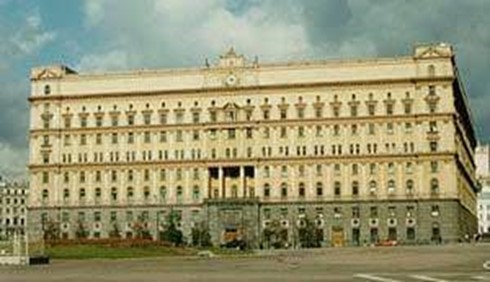

The FCD, on the other hand, occupied the same site as SVR does now. This is in Yasnevo, outside the outer ring highway (the MKAD) encircling Moscow, with the site approachable only using Exit 38 from the MKAD. For years, the road from that exit to the SVR complex has been identified (in true dry Soviet/Russian humor) as the entrance to a “Moscow Sanitation District” station, as witnessed by the sign in the right of the picture below taken in 2015.
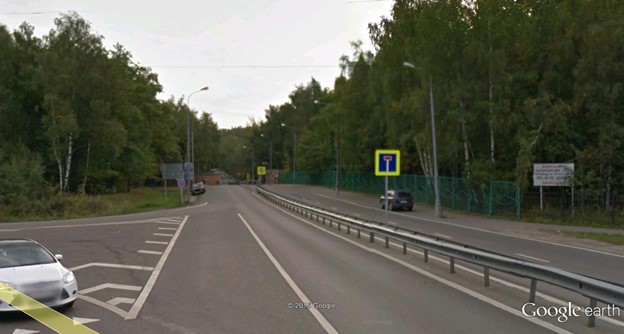

By the way, for some time the way leading to the CIA campus just over the Potomac from DC (and officially located at 1000 Colonial Farm Road, Langley, Fairfax County, Virginia) indicated there was a Department of Agriculture Research Station at the other end. So…
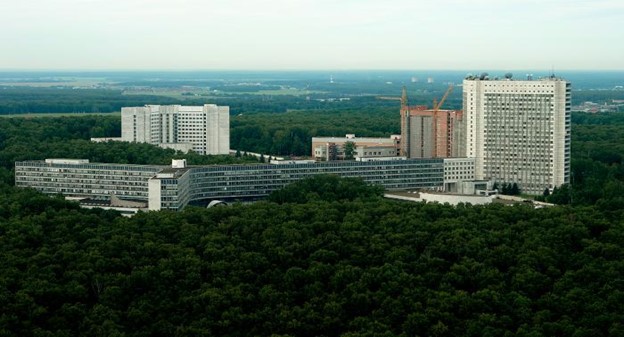

The FCD site was designed by a Finish company and opened in the early 1970s. The central building has a strange likeness to the Original Headquarters Building at Langley.
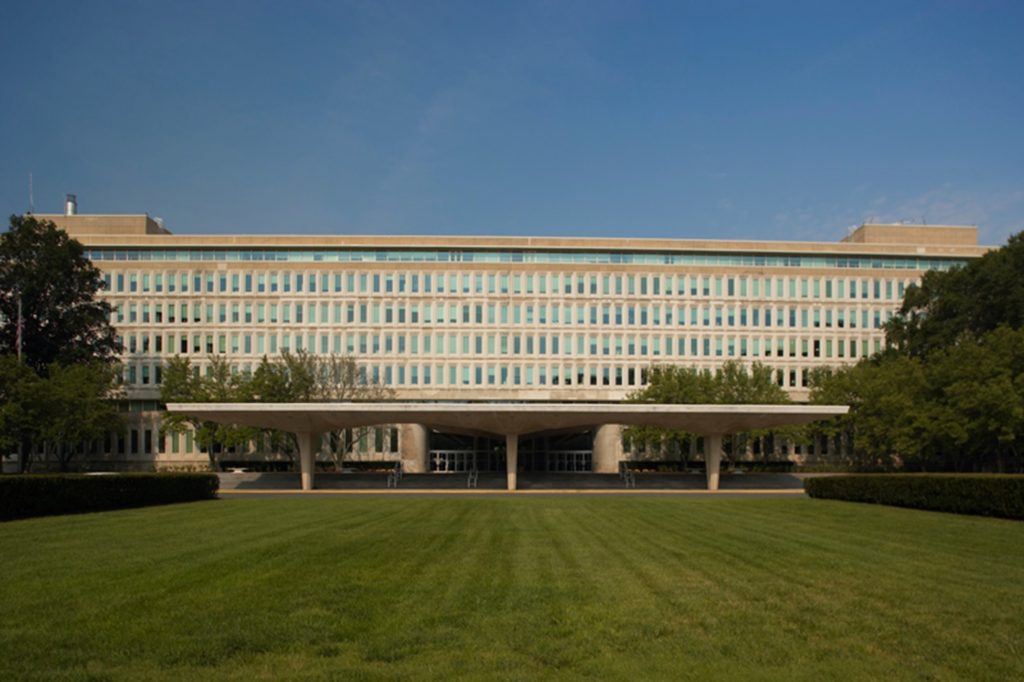

The Academy of Sciences also has its own security department. Upon occasion, battles over turf with the SCD would make for some interesting spectator sport (from which I would always keep my distance). Legally, foreigners could not know the identity of the SCD officers imbedded in Soviet domestic institutions and responsible for internal intelligence. That certainly included institutes of the Academy.
But that was difficult to enforce in practice. Anybody (like me) who was there day in and day out could easily figure who they were. Often, these would be staff who were almost invisible. One morning, watching a secretary following the institute’s director down a hallway and shaking papers at him (as he hurried away) was a striking tell.
That this woman made it a point to check on where I was on a frequent basis, also told a lot. She was hardly from the secretarial pool.
My small second floor office was connected to the conference room in which I lectured while Sounder’s much larger office suite was on the top floor (with the other main directors and administrators). I could not simply go up without an invitation (and an escort). That made frequent contact difficult and unwise.
Still, Sounder had orchestrated my invitation. That made him my “patron” in the Institute pecking order. We would cross paths during the weekly faculty sessions and have lunch together once or twice a month. The lunches were always in view of members on his personal staff, which were his private intel entourage (and subsequently identified by our side). Less often, there would be an occasion to go up to his office. Once again, staff were present, along with the woman from the “secretarial pool.”
However, the intel flow was sporadic. Sounder seemed less willing (or able) to provide what we had expected. Some lower-level “illegals” – Soviet intel officers and/or agents abroad operating without connection to Soviet embassies or diplomatic cover (i.e., their equivalent to what I was doing in Moscow as a NOC) – were caught but Sounder was not providing the essential intel on the network he had promised. On the occasions when we met in any of the settings, he was nervous and less than forthcoming.
I decided to cut first the frequency of our meetings and then put on hold the op itself. As the field officer, I had the leverage to do so. But the higher pay grades were not happy.
Eventually, Sounder just showed up one afternoon in my office and suggested taking a walk. As we strolled by the world-famous Pushkin Museum next door, he dropped a bombshell.
He wanted to defect and would provide the information we needed only after he was safely out.
This fundamentally changed the situation. I had just been involved in an abortive attempt at exfiltrating somebody from the USSR (see “A Failed Extraction from Tallinn” Classified Intelligence Brief,” August 11, 2021). We had never been successful at pulling one off.
I was also of the opinion that Sounder had yet to justify such a move. His intel was adequate but hardly outstanding. While he continued to indicate he had the “mother lode” and would blow open the entire structure of how KGB infiltration was being done into the US and elsewhere, he had not delivered.
The two of us had developed a personal connection beginning with our initial exchange in London years ago and I liked the guy. But the terrain was rapidly changing. I had the nagging feeling this could all have been a slow moving “dangle” operation almost seven years in the making. Designed to uncover our S&M (sources and methods) in Moscow, it may have been using me as an unwitting tool all along.
Despite his oft expressed love for his son and granddaughter, Sounder made no mention of trying to extricate anybody but himself. In addition to my own hide, his demand would also be high risk for others who would be put in harm’s way for intel I was beginning to conclude he did not possess.
One of those was a centrally placed administrator at the Institute who would immediately fall under suspicion. This suddenly become very personal. Because her name is Marina and the two of us had decided to buck geopolitics and get married.
All of this comes to a bitter end in next week’s Spy Tale.


Dr. Kent Moors
This is an installment of Classified Intelligence Brief, your guide to what’s really happening behind the headlines… and how to profit from it. Dr. Kent Moors served the United States for 30 years as one of the most highly decorated intelligence operatives alive today (including THREE Presidential commendations).
After moving through the inner circles of royalty, oligarchs, billionaires, and the uber-rich, he discovered some of the most important secrets regarding finance, geo-politics, and business. As a result, he built one of the most impressive rolodexes in the world. His insights and network of contacts took him from a Vietnam veteran to becoming one of the globe’s most sought after consultants, with clients including six of the largest energy companies and the United States government.
Now, Dr. Moors is sharing his proprietary research every week… knowledge filtered through his decades as an internationally recognized professor and scholar, intelligence operative, business consultant, investor, and geo-political “troubleshooter.” This publication is designed to give you an insider’s view of what is really happening on the geo-political stage.
You can sign up for FREE to Classified Intelligence Brief and begin receiving insights from Dr. Moors and his team immediately.
Just click here – https://classifiedintelligencebrief.com/






